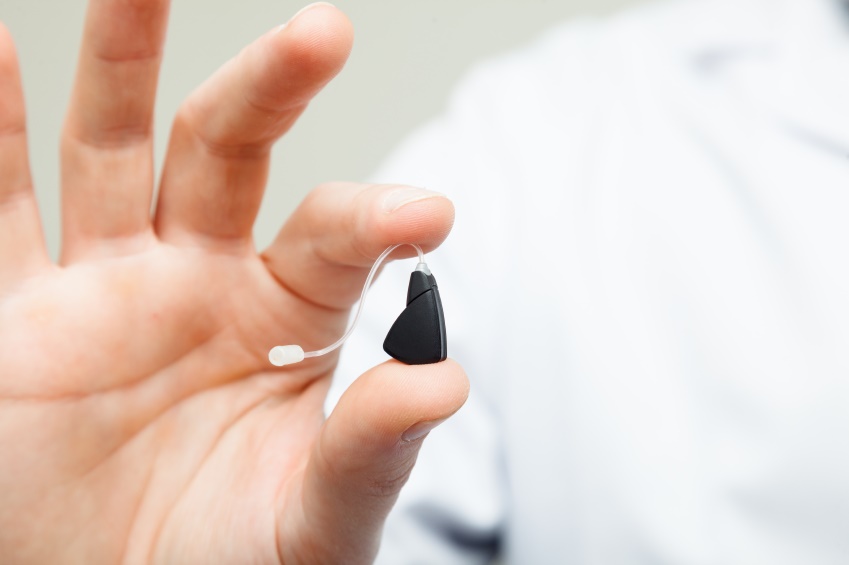
Hearing aid guides are not uncommon, but the majority are not quite reader-friendly, either. Many are generally too lengthy or complicated, resulting in more confusion instead of less.
My guess is that you’re a great deal less interested in the physiology of hearing or in the intricacies of acoustical engineering and more interested in determining the most suitable technology at a reasonable price. Your objective is to hear better, not to read a 20-page manual.
If that represents you, then you’ll benefit from this simple guide to hearing aids. We’ll cover four brief sections, and when we’re finished, you’ll be ready to work with your hearing care professional to discover the technology that’s most appropriate for you. Let’s get started.
How All Hearing Aids Work
Choosing a hearing aid can feel overwhelming—there are a number of brands and seemingly never-ending factors to consider. But it’s not as complicated as it seems. As you move on through this guide, try to remember that all digital hearing aids work essentially the same way, and include these four basic parts:
- The microphone registers external sound and sends it to the digital processor.
- The digital processor adjusts the sound signal according to the settings programmed by the hearing specialist. The revised sound signal is then transmitted to the amplifier.
- The amplifier increases the volume of the sound according to the programmed settings, amplifying only the frequencies the individual has trouble hearing (while suppressing background noise). This signal is then transmitted to the speaker.
- The speaker renders the enhanced sound to the ear, resulting in louder, clearer sound.
In addition, all hearing aids contain a battery, volume and setting buttons, and remote controls.
Hearing aids really only differ in two essential ways: 1) style, and 2) advanced features. We’ll address these in the next two sections.
Hearing Aid Styles
You have your choice of three principal styles:
1. Behind-the-ear (BTE) hearing aids hook over the top of the ear and sit behind the ear. The case is then fastened to an earmold in the ear canal by a piece of clear tubing. BTE hearing aids are convenient to handle and clean, generally have an extended battery life, and can accommodate severe hearing loss.
2. In-the-ear (ITE) hearing aids fill the outer part of the ear with a custom-molded shell. ITE hearing aids are smaller than the behind-the-ear hearing aids but larger than the in-the-canal styles. This renders ITE hearing aids easier to handle than the smaller styles but less detectable than the BTE style.
3. In-the-canal (ITC) hearing aids and completely-in-the-canal (CIC) hearing aids fit partly or entirely inside of the ear canal, which makes them almost or completely invisible. ITC and CIC hearing aids are custom molded to the curves of the ear, and some can be used for several months at a time.
When choosing a style, weigh the tradeoffs among user-friendliness, battery life, and concealment. Your hearing care expert will help you prioritize your preferences and identify the most suitable style.
Hearing Aid Advanced Features and Accessories
After you’ve chosen the right style, you can identify which of the following features you need—and which you don’t.
- Directional microphones permit you to concentrate on the sounds and conversations directly in front of you while decreasing the distraction of loud background noise.
- Telecoils, or T-coils, allow you to talk on the phone while decreasing the static brought about by background noise.
- Environmental noise control allows you to optimize hearing based upon your environment, for instance in a tranquil room at home as opposed to in a chaotic restaurant.
- Direct input to sound sources such as TVs, radios, computers, and music players allow for clear sound without background noise.
- Wireless connection to mobile phones turns your hearing aids into top quality wireless headphones. The hearing aid settings can be regulated from the phone (or smart watch), and sound can be wirelessly streamed directly from the phone to the hearing aids.
Optional accessories include cleaning systems, storage cases, ultraviolet sanitizers, battery-changers, and more. Your hearing care professional can help you decide which hearing aid accessories you may need or want.
Selecting the Right Hearing Aids
Before making an investment in hearing aids, take these four steps:
- Find a reputable, local hearing care professional. Only professionals with adequate experience can test your hearing properly, which is essential for when it comes time to program, fit, and calibrate your hearing aids.
- Discuss hearing aid styles and advanced features. Your pick of hearing aids will hinge on your preference of style and function. Explore these two facets with your hearing professional and your options will become manageable.
- Develop a budget. Some would say that your hearing is priceless, but that doesn’t mean you have an unlimited budget. With all of the hearing aid options available to you, you and your hearing specialist can find the right hearing aid at an affordable price.
- Test drive your new hearing aids. inquire about trial periods and test out your new hearing aids. Talk with your hearing specialist to establish realistic expectations and give your hearing aids an opportunity to show results. Your perseverance will be paid back when you recognize the difference better hearing will make in your life.
And that’s it. What seems like a complex process is in reality easily workable, once you know how to prioritize your needs and narrow your options. With the assistance of your local hearing care professional, you can uncover the most appropriate technology at the right price—so you can start taking pleasure in all of the benefits of better hearing.
